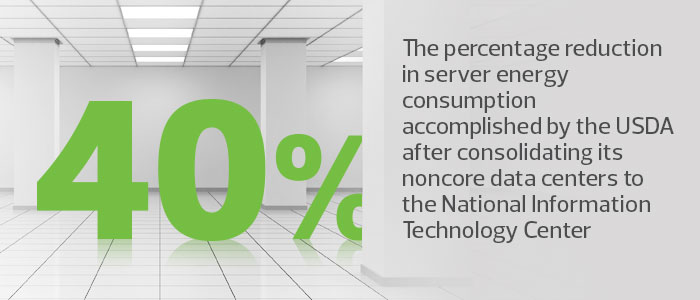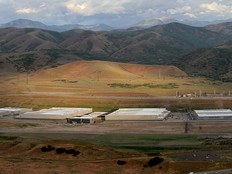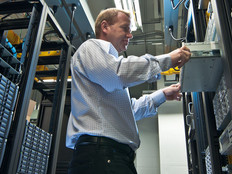Federal Data Centers Are Getting Greener
For some government IT leaders, the federal Data Center Optimization Initiative (DCOI) promises change, but for officials at the Department of Agriculture, the initiative builds upon the department’s ongoing efforts to consolidate its data centers.
“DCOI provides a great roadmap, but it aligns with what we’re already doing,” says Doug Nash, the USDA’s deputy CIO for Operations and Infrastructure.
In an effort to streamline data center efficiency, the Office of Management and Budget drafted the DCOI in March.
DCOI requires agencies to continue to consolidate data centers and use more efficient infrastructure, such as virtualization, cloud services and shared services with other agencies. The initiative also requires agency data centers to meet performance metrics, including increased energy efficiency.

SOURCE: National Information Technology Center, “2015 Annual Report,” January 2016
Still in draft form, DCOI becomes mandatory in September after OMB incorporates public feedback gathered during a 180-day open comment period. DCOI will replace the Federal Data Center Consolidation Initiative (FDCCI), which in 2010 mandated agencies to shut down data centers and has resulted in $2.8 billion in savings.
Federal officials believe DCOI can save taxpayers an additional $1.3 billion by the end of fiscal year 2018.
Embracing Commercial Cloud Services
USDA’s IT leaders took an aggressive approach to closing noncore and nontiered data centers.
Richard Coffee, USDA’s associate CIO of enterprise data center operations, says 83 percent of the department’s 2,200 noncore data centers have closed since October 2015. He hopes to shutter the rest before the end of this summer.
Furthermore, IT staff at the USDA built its own private cloud at the National Information Technology Center (NITC) in Kansas City, Mo., and the department continues to invest in commercial cloud. This summer, USDA’s IT leadership launched a cloud-based development and test environment on Microsoft Azure.
Jonathan Alboum, CIO at the USDA, says his office facilitated consolidation through a number of measures. First, IT staff and the department’s bureaus and subagencies can migrate data and applications to the NITC or move to commercial cloud services.
“This collaborative environment bolstered our consolidation,” Alboum says. “We respect that our components may have unique or complex requirements, so we don’t mandate that they consolidate it a certain way.”
While DCOI encourages shared services, the USDA has been a shared services provider since 1997. The NITC, made up of three enterprise data centers, hosts applications and provides platform cloud services to more than 10 agencies outside of USDA.
To comply with DCOI standards, IT staff at the USDA will install energy metering tools and maintain a power usage effectiveness rating of at least 1.4, but preferably 1.2. Coffee says the department will invest in a more efficient cooling system and uninterruptible power supply to further boost energy efficiency.
“There are still a few things we can do to be more efficient,” Coffee says.
Backing to Increase Optimization
At the State Department, DCOI gives the Bureau of Information Resource Management (IRM) the clout it needs to continue its optimization efforts, says Melonie Parker-Hill, the division chief of the Enterprise Operations Center.
“DCOI gives us teeth since this is a mandate,” she says. “At IRM, we want to improve data center efficiency because it’s the right thing to do. Others, though, without that direct responsibility, may be slow to move or react.”
The State Department has four enterprise data centers. IT staff recently began consolidating an East Coast data center in a leased facility with the department’s first of multiple modular data centers, an energy-efficient commodity container that uses outside air to support cooling.

The modular data center, which uses converged infrastructure and is housed on government property, will reduce spending on rent and energy costs, Parker-Hill says.
“We’re moving from 11,000 square feet to 1,000 square feet and from approximately 500 racks to 44 racks,” she says. “The efficiency gains and cost savings will be huge.”
The State Department is also making inroads with cloud adoption. It currently offers a development environment as a private cloud service and is scheduled to go live with private infrastructure services in 2017, Parker-Hill says.
Other agencies also are talking with IRM officials about leasing available space at the State Department’s West Coast enterprise data center, she says.
Pentagon Consolidates Data Centers
Under FDCCI, the Department of Defense closed 680 data centers. The department plans to close another 890 and keep 1,900 open, says Bob Brown, DOD’s data center lead.
The DOD, which has 12 enterprise data centers, plans to consolidate Installation Processing Nodes (IPNs), data centers that provide local IT services to the military’s approximately 250 camps and stations around the world. DOD currently has 511 IPNs in service when each installation should only have one, Brown says.
“We can do better to drive the IPN population down,” he says.
Consolidating the Defense Department’s other nontiered data centers, as required by DCOI, is more challenging. The department has 1,400 Special Purpose Processing Nodes (SPPNs), where servers are used for specific equipment, such as medical-imaging equipment or flight simulators. The DOD also has a fluid number of Tactical/Mobile Processing Nodes (TPNs), which support warfighters at the tactical edge.
TPNs are mission-critical, while the SPPNs are tied to specific equipment, which makes them hard to consolidate. Furthermore, while the DOD will install energy metering tools at its enterprise data centers, it doesn’t make sense to put measuring tools on SPPNs.
The DOD is communicating its concerns to OMB and hopes the office makes exceptions in those two areas when it finalizes the new initiative. Overall, Brown believes DCOI will make a positive impact on government.
“By and large, we are fairly well aligned with DCOI,” he says. “It is more directive and more specific, and I think for many agencies, it will move them forward with optimization more rapidly.”









